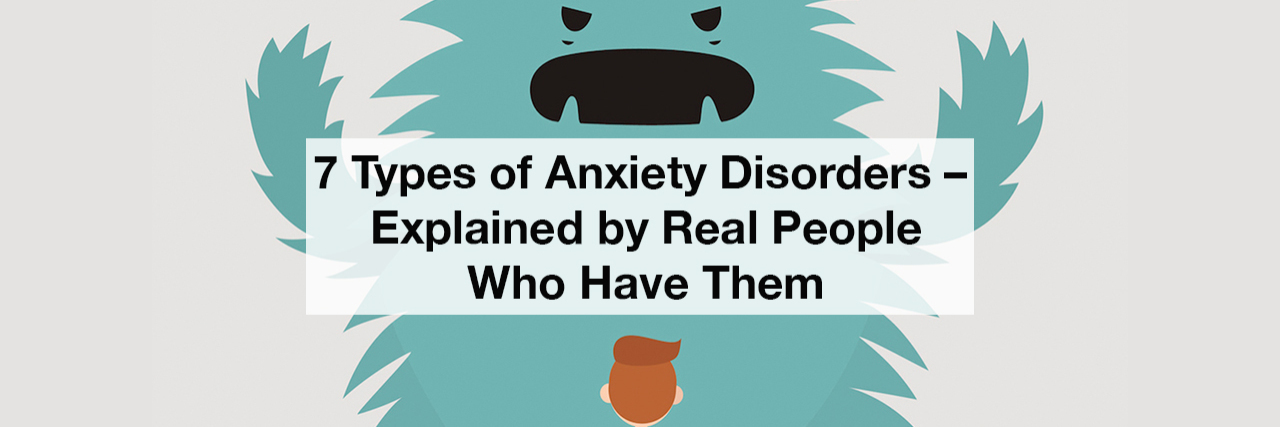When someone says they “have” anxiety, what does that really mean?
Well, it could mean a lot of things, but generally, people who “have” anxiety experience it in a way that affects their daily lives, functioning and overall happiness.
While of course going through stressful life events can be anxiety-inducing for anyone, people who have anxiety typically fight it no matter what’s going on in their lives. This doesn’t mean they don’t have good days — it just means good days, or what could be considered low-stress situations, can still make someone with anxiety… well, anxious.
Of course, past events can contribute to current anxiety, and changing your situation can always help reduce anxiety and improve happiness. But people with anxiety typically need more tools in their pocket to get through whatever day-to-day challenges they face.
When anxiety affects your life this much, you may meet the criteria for an anxiety disorder. While everyone’s struggle with anxiety is valid even if you don’t get diagnosed (you can, for example, go to a counselor without ever getting a diagnosis), for some people, a label is a helpful tool.
Maybe a diagnosis puts you on a path to proper treatment. Maybe it makes you feel less alone, because now you have a name for what you’re going through. Maybe in order to get accommodations at work or at school, you need documentation, and an anxiety disorder label helps explain the challenges you face.
Here, we wanted to put a human face on anxiety disorders and explain what living with them is really like. Because people who live with anxiety disorders are more than a list of symptoms — they’re people facing real challenges, and understanding what you’re going through is an important step in tackling anxiety head-on.
Here’s a list of anxiety disorders — including quotes about what it’s like to live with them:
1. Generalized Anxiety Disorder 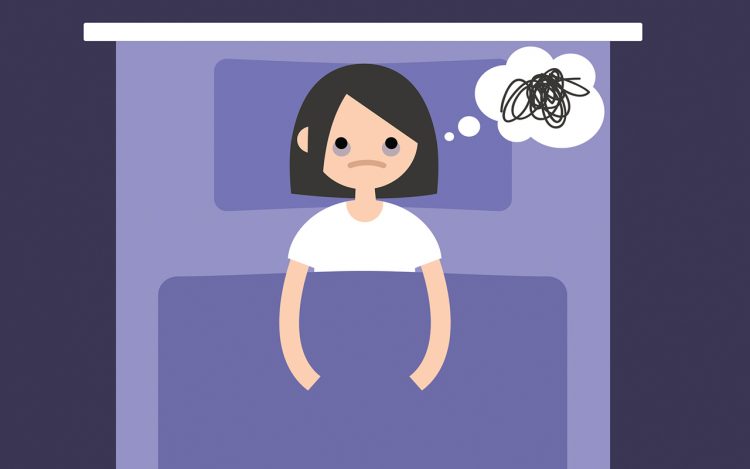
According to the Anxiety and Depression Association of America (ADAA), generalized anxiety disorder (GAD) is characterized by persistent and excessive worry about everything from money, health, family, work or other issues. People with GAD are always anticipating disaster or expecting the worst, even when there’s no evidence they should be concerned.
In order to be diagnosed, you need to experience three of the following symptoms on more days than not for at least six months:
- Restlessness or feeling keyed up or on edge
- Being easily fatigued
- Difficulty concentrating or mind going blank
- Irritability
- Muscle tension
- Sleep disturbance (difficulty falling or staying asleep, or restless, unsatisfying sleep)
What helps people live with it:
- Supportive and interpersonal therapy
- Cognitive behavioral therapy
- Acceptance commitment therapy
- Medication
- Relaxation techniques (like meditation, yoga and exercise)
What it’s like (from real people who have it):
Have you ever been going about your day and suddenly felt the physical urge to run? As fear washes over you, you know you’re in danger and have to escape. Adrenaline surges through your body, your heart starts racing, your breath becomes shallow, the panic sets in. You’re on high alert, ready to beat the danger, prepared to do whatever it takes to survive. But there’s nothing to run from. There’s no one chasing you, burning flames aren’t about to engulf you, you’re not under threat. Your environment says you’re safe, but your mind will tell you otherwise. That is my anxiety.
— Jo Robinson, from “What I Want People to Know About the Anxiety Hiding Behind My Smile”
When my anxiety hits, my brain feels like a tornado with a million thoughts swirling around causing destruction and building strength the longer it goes on. To deal with the natural disaster occurring in my head, I will often ‘shut down’ to the outside world. I may appear despondent, uninterested, distracted or reserved. It’s not that I’m not taking in what’s going on around me, but I often can’t respond to it because I am beyond overwhelmed between the thoughts in my head and the reality I’m facing.
— Meghan Hart, from “7 Things You Should Expect When I’m Having an Anxious Episode”
The ground is slipping out from under you, and you have to constantly move, regularly squirm and frequently tense your body in order to make it from moment to moment. And quite often, no one around you has even the smallest idea of what you’re feeling. They don’t notice the sudden flinch, or the tension that ripples through your shoulders, or the way you might throw out your hands a little to steady your balance. No one may see you glance down, confused, reorienting yourself as you check that the world isn’t completely gone from underneath you. You’re still here, you’re still part of the scene. You just have to reposition yourself and get your bearings again.
— Wynn Lane, from “A Metaphor for People Who Are ‘High-Functioning’ With Generalized Anxiety Disorder”
Find out more information:
2. Social Anxiety Disorder 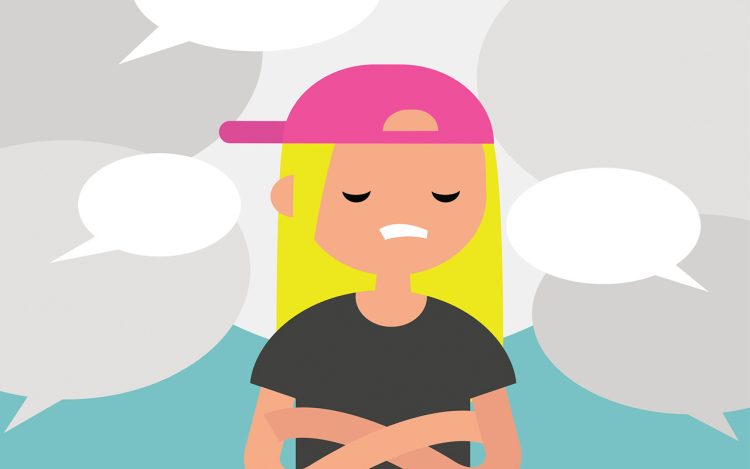
Social anxiety disorder is defined by an intense anxiety or fear of being judged, negatively evaluated or rejected in a social or performance situation, according to ADAA. It is not simply shyness. People with anxiety disorder often go out of their way to avoid social situations, and experience a signifiant amount anxiety and distress when something can’t be avoided.
It’s also common for people with social anxiety to experience physical symptoms in social situations such as:
- Rapid heart rate
- Nausea
- Sweating
- Panic attacks
In order to get diagnosed, this distress over social situations must be so extreme, it affects your daily life — including routines, performance at work, ability to complete school or hold a job, friendships, romantic relationships and overall happiness.
What helps people live with it:
- Supportive and interpersonal therapy
- Cognitive behavioral therapy
- Support groups
What it’s like (from real people who have it):
I am petrified of people and this fear debilitates me from being able to physically send online messages to my friends. I want, more than anything, to be able to textually say hello to my friends. I want to be able to communicate, but I can’t. To some, picking up their mobile phone and typing away to people is an easy task. For me, it is one of the hardest things to do.
— Jazz Frost, from “What I Need My Friends to Understand About My Social Anxiety”
It’s about way more than just “being shy.” I’m not just an introvert who would rather be at home with a cup of coffee and a nice book. I’m someone who desperately wants friends, desperately wants to relate to other humans and wishes I could enjoy my time outside of the house without feeling like I need to run away. I may seem shy sometimes, but shy and anxious are not synonyms. They are two different things.
— Benji Y., from “22 Things People With Social Anxiety Wish Their Friends Understood”
I wake up dreading a day full of people, with no time alone to rest. I wake up early, but am too anxious to fall back asleep. I get ready, being careful to style my hair and find a nice outfit, nervous my client will judge me, along with my classmates later on. A lot of days I don’t have the energy for this, but this morning, my nervousness compels me to put myself together.
— Anna Lente, from “A Day in My Life With Social Anxiety”
Find out more information:
3. Panic Disorder 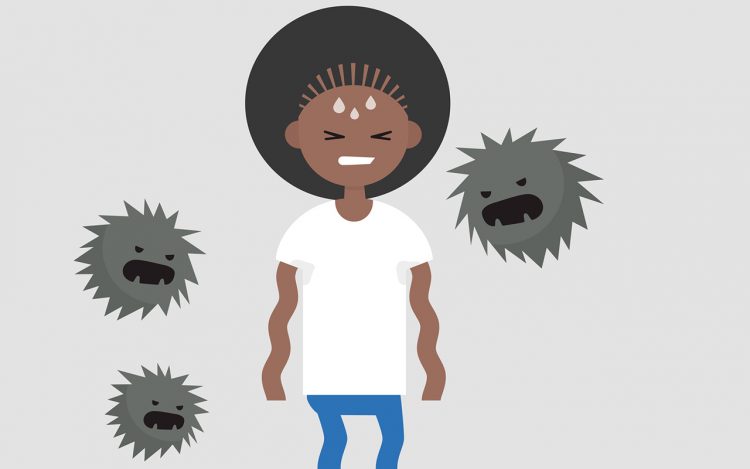
People with panic disorder experience seemingly out-of-the-blue panic attacks that interfere with their daily lives. Because of these occurrences, they often live in fear of their next panic attack, and might have anxiety about situations that could set one off. Panic attacks typically reach their peak in 10 minutes or less and then begin to subside.
According to ADAA, a panic attack starts abruptly and includes at least four of the following symptoms:
- Palpitations, pounding heart, or accelerated heart rate
- Sweating
- Trembling or shaking
- Sensations of shortness of breath or smothering
- Feelings of choking
- Chest pain or discomfort
- Nausea or abdominal distress
- Feeling dizzy, unsteady, light-headed, or faint
- Chills or heat sensations
- Paresthesia (numbness or tingling sensations)
- Derealization (feelings of unreality) or depersonalization (being detached from oneself).
- Fear of losing control or “going crazy”
- Fear of dying
What helps people live with it:
- Cognitive behavioral therapy
- Acceptance commitment therapy
- Medication
- Mindfulness
What it’s like (from real people who have it):
I can’t focus on anything except for my scattered thoughts that make me feel like I’m dying. Deep down, I know I’m not, but in the moment it feels like I’m never going to be able to gain control again. That’s the worst part — it feels like I’ve completely lost control. I can’t control my heart rate, I can’t control my breathing, I can’t control my shaky body, I can’t control my thoughts, I can’t control who is around me. Eventually, my hands and feet and sometimes my stomach get very tingly, almost like they’re falling asleep. Another thing I can’t control. I also usually either get very hot to the point where I’m sweating profusely, or very cold to the point where I’m hugging myself tight and shivering. I begin crying; a lot of times I don’t notice it until afterwards, and I usually don’t know why this occurs.
— Bailey Griffin, from “To My Friends Who Are Curious About What a Panic Attack Feels Like”
Every part of your body is in overdrive. Your mind, your fears, your heartbeat, your breathing. Except there’s no brake pedal. You have to coast through until it eventually stops.
— Lexie Nooyen, from “What It’s Like to Have a Panic Attack, From 24 People Who’ve Been There”
Everything goes in slow motion like the movie “The Matrix.” You can see and hear people, but you’ve officially entered a new physical realm. No one knows you’re there, and no one hears you.
— Norma Fernandez, from “What It’s Like to Have a Panic Attack, From 24 People Who’ve Been There”
Find out more information:
4. Specific Phobias 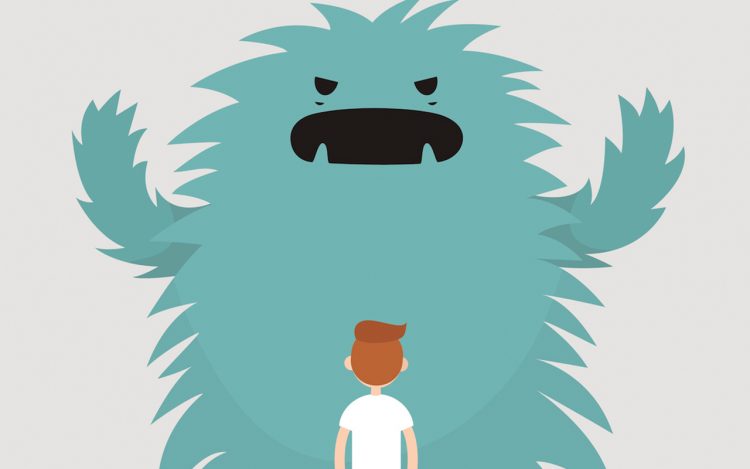
Arachnophobia, ophidiophobia, acrophobia, cynophobia. Everyone has things that make them nervous, but for people who live with specific phobias (like the ones listed above), this fear is excessive and all-consuming, limiting the quality of their lives.
People who struggle with specific phobias might avoid places, situations or objects that might expose them to what they fear, even if there’s a high chance there’s no threat or danger. According to ADAA, “The fear may not make any sense, but they feel powerless to stop it.” Much of the fear revolves around the anticipation of encountering their trigger.
Common phobias include fears of animals, insects, germs, heights, thunder, driving, public transportation, flying, dental or medical procedures, and elevators.
What helps people live with it:
- Exposure therapy
- Cognitive behavioral therapy
- Relaxation techniques
- Medication
What it’s like (from real people who have it):
I’ve recently been struck by just how different fears and phobias are and how many people assume a phobia is the same as a fear. For me they are on the same spectrum, but a phobia is a whole different level. Mostly we avoid things we fear in a general sense, like death. A lot of people fear death, we would avoid death in a general way, like avoiding poisons or adhering to safety instructions, but it doesn’t typically dictate your life. A phobia, however, takes over everything, every waking moment. Every decision made has to take the phobia into consideration.
— Lizzi Northwood, from “My Phobia Is More Than ‘Just a Fear’”
Here’s a fun fact – phobias irrationally exaggerate danger. I am fully mentally aware that I am in no danger when there is a moth in the room, but my body reacts uncontrollably as I am triggered into feeling frightened, uncomfortable and anxious.
— Sally Parker, from “Why You Should Never Make Fun of Someone With a Phobia”
People with phobias are not alone, even though that’s exactly how I feel. We don’t choose to have them. They are not an excuse. They’re not something we will “just get over.” They have such a hold on all facets of our lives that people can’t even imagine.
— Kristin Carlson, from “How My Life Has Changed After Developing a Phobia”
Find out more information:
5. Agoraphobia 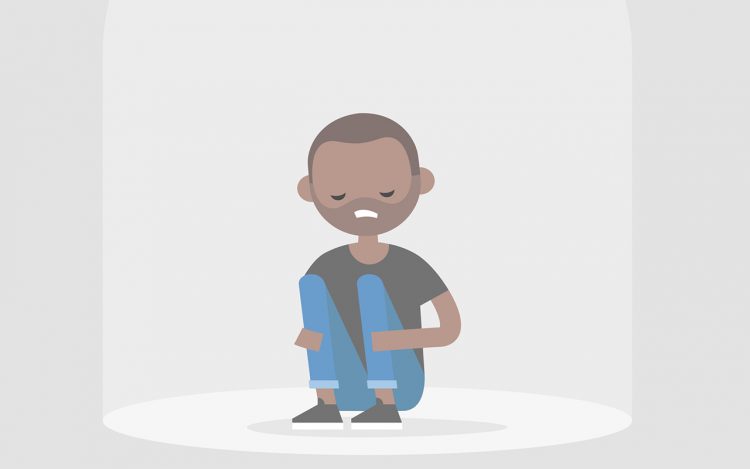
Whether it’s because they’re afraid of having a panic attack — or because they’re fighting a specific phobia or trigger — those who develop agoraphobia get so overcome with the anticipation of anxiety, they avoid going anywhere outside of their (limited) comfort zone.
They typically avoid environments they feel like can’t control — like shopping malls, public transportation or concert venues — and tend to stay in places that make them feel safe, like their own homes.
For people with agoraphobia, their world becomes smaller, and they may develop strict routines to ensure they never have to leave their safety zone.
What helps people live with it:
- Medication
- Cognitive behavioral therapy
- Exposure therapy
What it’s like (from real people who have it):
When I am faced with going somewhere outside my comfort zone, especially without my husband, I feel frantic. I am terrified I am going to have a panic attack. Panic attacks for me aren’t pretty. Are they ever though? I sob uncontrollably and can’t breathe. My legs go weak until I sit where I once stood. I get dizzy and develop paresthesias which is the sensation of pins and needles and numbness on my face and often one or both arms. The panic attack also often induces an asthma attack. Sounds super fun, right? It’s embarrassing. I feel ashamed. I feel guilty for subjecting my family to this. I have to try to convince myself this is not my fault.
— Bridget Pendergraft, from “What I Wish People Knew About My Life With Agoraphobia”
It became hard to even leave the bedroom. I could go days without eating, not because I had no food, but because I couldn’t get to the kitchen — I would freeze before I got out the door of my bedroom. I would be sweating and shaking and crying – all the while I knew it was completely absurd. Finally, I learned to crawl to the kitchen and drag as many things back with me as I could, for fear it might be days before I could manage to go back. In the back of my head, I knew I was going to die. I would run out of food, out of strength, out of time. I knew I was going to die, I just didn’t know when.
— Jill Alexandra, from “When Agoraphobia Left Me Alone and Housebound for Months”
I’m not afraid to leave my house, but sometimes doing regular tasks, like walking down the street to the pharmacy and a little bit farther to the post office, can seem difficult. I know the measurable distance is small and I could easily run home in less than five minutes. However, the closer I get to my destination, the farther it seems to be, especially when I look back to see where I’ve come from. I know when I get there I will be OK, but the space between the two points seems like a wide gulf.
— Emily Atkinson, from “I Have Agoraphobia, but I’m Not Afraid to Leave My House”
Find out more information:
6. Obsessive-Compulsive Disorder 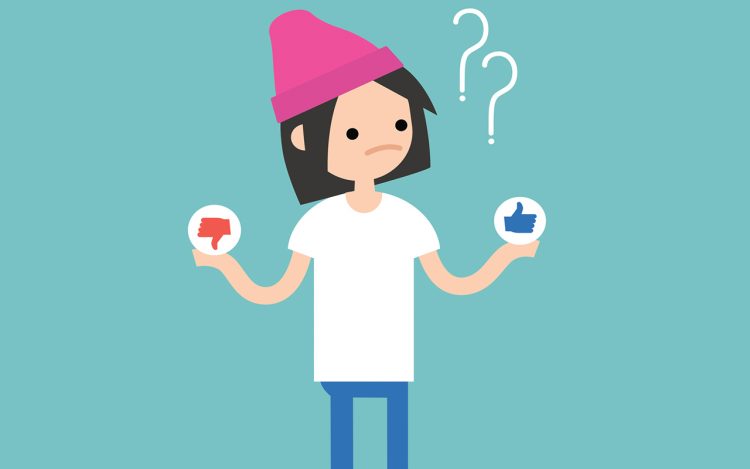
No, it’s not just being neat or hand-washing, but for some, those compulsions are part of the equation. Obsessive-compulsive disorder (OCD) is defined by the relationship between obsessions and compulsions. According to the International OCD Foundation (IOCDF), “Obsessions are unwanted, intrusive thoughts, images or urges that trigger intensely distressing feelings. Compulsions are behaviors an individual engages in to attempt to get rid of the obsessions and/or decrease his or her distress.”
When people with OCD have obsessions — which cause intense anxiety — they do a compulsion in order to relieve that anxiety. And although the anxiety might go down temporarily, next time that fear arrises, they have to do the compulsion again. The IOCDF explains that for people with OCD, this cycle of obsessions and compulsions becomes so extreme, it consumes a lot of time and gets in the way of important activities that the person values.
What helps people live with it:
What it’s like (from real people who have it):
It’s like being controlled by a puppeteer. Every time you try and just walk away, he pulls you back. Are you sure the stove is off and everything is unplugged? Back up we go. Are you sure your hands are as clean as they can get? Back ya go. Are you sure the doors are securely locked? Back down we go. How many people have touched this object? Wash your hands again.
— Toni Neville, from “17 Quotes That Prove OCD Is So Much More Than Being Neat”
Picture standing in a room filled with flies and pouring a bottle of syrup over yourself. The flies constantly swarm about you, buzzing around your head and in your face. You swat and swat, but they keep coming. The flies are like obsessional thoughts — you can’t stop them, you just have to fend them off. The swatting is like compulsions — you can’t resist the urge to do it, even though you know it won’t really keep the flies at bay more than for a brief moment.
— Cheryl Little Sutton, from “17 Quotes That Prove OCD Is So Much More Than Being Neat”
For me, it’s an ever-present nagging feeling that something is just ‘not right.’ I can never really, truly ‘make it right.’ I have to learn to live with the all-consuming feeling of mental discomfort.
— Laura McCarthy, from “17 Quotes That Prove OCD Is So Much More Than Being Neat”
Find out more information:
7. Post-Traumatic Stress Disorder 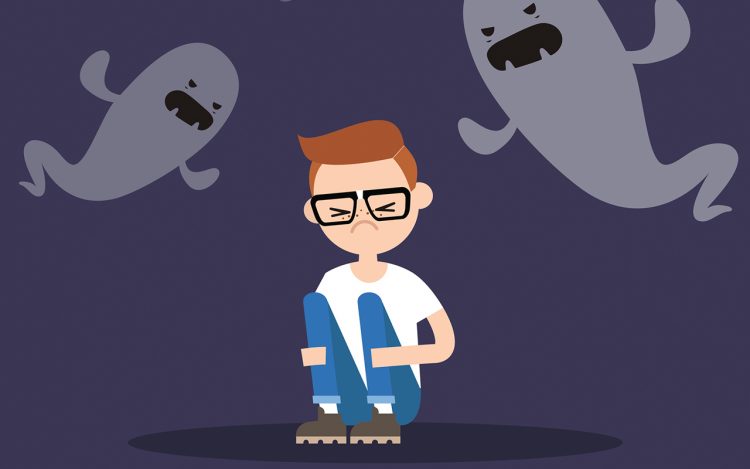
Although post-traumatic stress disorder (PTSD) isn’t usually grouped in with disorders like OCD and GAD — it’s technically classified as an anxiety disorder. PTSD is when your body experiences anxiety, fear and panic in response to a traumatic event that happened in the past — even years later. According to ADAA, PTSD is diagnosed after a person experiences symptoms for at least one month following a traumatic event.
The disorder is characterized by three types of symptoms:
- Re-experiencing the trauma through intrusive distressing recollections of the event, flashbacks and nightmares.
- Emotional numbness and avoidance of places, people and activities that are reminders of the trauma.
- Increased arousal such as difficulty sleeping and concentrating, feeling jumpy, and being easily irritated and angered.
You don’t have to be a combat soldier to experience symptoms of PTSD. People can develop PTSD after a variety of traumatic events, including sexual assault, surviving a car crash and witnessing violence.
What helps people live with it:
- Cognitive behavior therapy
- Talk therapy
- Eye movement desensitization and reprocessing (EMDR)
- Exposure therapy
What it’s like (from real people who have it):
I’m watching TV. A violent scene that would send me into flashbacks comes on and I disassociate. I’m no longer even “there” to react. I make plans and then spend an hour before thinking of ways to back out because the anxiety of being around people is almost overwhelming. Shopping during busy times makes me dizzy and short of breath.
— Liz Zemlicka, from “This Is What My Post-Traumatic Stress Disorder Looks Like”
It’s opening your eyes in the morning, pulse racing, with a deep feeling of fear gripping you, despite praying the night before that tomorrow might be the day you wake up and it’s gone. “It’s telling yourself every five seconds of the day that it’s irrational, illogical, no harm will come to you, you are safe, they are just thoughts; but getting hoarse from repeating yourself because your body can’t hear you.
— Laura Hills-Garner, from “This Is My Complex PTSD”
Take a moment and imagine your brain was programmed like a broken VHS. It won’t stop playing and it’s projected fullscreen with certain parts of the movie missing, some parts repeating multiple times and there is always static present. Your brain is permanently fixated and specific triggers cause you to exhibit behaviors. However, triggers do not always have to be present for symptoms to occur, racing thoughts substitute. Envision being so overwhelmed that you feel as if you’re having an ‘out of body’ experience. This is what PTSD feels like, at least for me.
— Teresa Silver from “My Secret Life With Post-Traumatic Stress Disorder“
Find out more information:
Whatever anxiety disorder you have — and however anxiety effects you — it’s important to know you’re not alone, and that it’s possible to live a full and happy life with anxiety.
Getty images by nadia_bormotova

